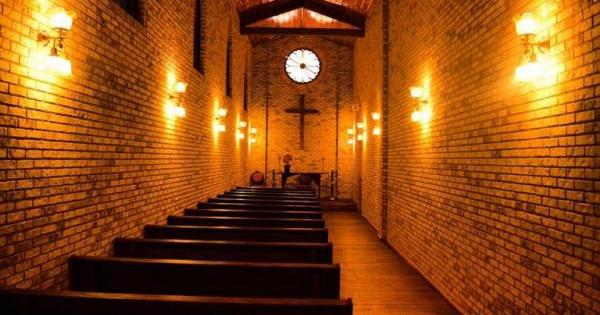I recently attended an ATS (Association of Theological Schools) meeting of mid-career faculty where we discussed some of the daunting challenges seminaries face.

We heard about some creative initiatives some seminaries are trying out, and shared our own strategies for moving forward in an increasingly difficult era for theological education.
Seminaries feel mounting pressure to justify our existence because, over the past two decades, a rising number of seminaries has competed for a shrinking pool of prospective students.
At the immediate level, it’s not about justifying our existence in a theoretical sense, it’s about survival–plain and simple. However, I don’t seen any real point in survival for survival’s sake — which is why the emphasis should remain on justification. Why do we exist? What problem do we solve? What role do we fill that no one else can fill?
We’re seeing now a “correction” in that ominous formula I named above (more seminaries serving fewer and fewer students), as more and more smaller, self-standing seminaries are either closing or merging. Others are exploring alternative revenue streams (tuition and donations are usually not enough), looking to leverage assets like land, buildings, or “air space” for financial sustainability.
One thing probably all seminaries are doing is revising their curricula to meet shifting demands and to make seminary content (and delivery of content) more appealing to and useful for contemporary students and the challenges of society. In other words, relevance.
But of course not everyone agrees on what’s “relevant.”
Curriculum revision is challenging on many fronts, because multiple allegiances, identities, differing objectives, constituents, and pragmatic realities push in different directions.
I’ve been involved in numerous curricular revision processes, in three very different institutions, over the past two decades. In my presentation to the meeting, I shared the following seven tensions that always seem to spring up when taking on seminary curriculum revision:
- Inter-departmental turf wars: Anytime you mess with a curriculum, conflicts based on discipline emerge. Sometimes these conflicts spring from pure self-preservation instincts — for example, if you eliminate an ethics course, what will happen to the ethicist we just hired? Or, they can emerge from value differences (theory over applied and vice versa, New Testament over Old Testament and vice versa, historical versus contemporary knowledge, and vice versa)
- Identity: Are we as a seminary primarily experimental, pragmatic, and experiential, or intellectual, rigorously academic, and connected to a history? Often seminaries want to be all of the above, but that’s probably unrealistic.
- Access and Pedagogy: Are we flexible and accessible to everyone, regardless of distance and work schedules, or do we insist on ensuring a quality of pedagogy, thereby requiring students to adhere to our schedule and delivery of education? This is the “online” or fully distance question, and at this point at least, it’s the tension between access and flexibility versus quality of pedagogy. I think most seminaries agree that some element of online/distance accessibility is necessary (and there are pedagogical advantages to distance/online education that can be leveraged– the question is how much and what are the checks to ensure that quality of education is not lost?
- The credits/enrollment formula: In the past decade, ATS has significantly lowered the minimum number of credits required for an accredited M.Div. (72) and for an M.A. (36). When you lower the number of credits in a degree curriculum, you expect to see an increasing number of students, because the degree costs less and takes less time to finish. Alternatively, though, you receive fewer dollars for each student. So seminaries have to balance that formula in their revisions.
- The branding problem: This is related to the entire curriculum revision, but it’s the question of how we “brand” ourselves to the world. Are we cheap, easy, and quick? Or are we deep, substantive, and transformational? Again, we’d all like to say “yes” to all the above–but is that realistic?
- The constituent problem: Denominational leaders, pastors, and ordination committees speak into seminary curriculum (as they should). But the message from them isn’t always crystal clear either. It’s often beset by the same tensions. Do they want (or need) deep, thoughtful, reflective theologians who know their denominational history and can preach inspiring and theologically powerful sermons? Or do they want (or need) pragmatic, effective leaders who can grow a church and manage a budget and help people organize their lives?
- The seminary problem: This is the question that has always faced seminaries. We’ve never quite understood whether we are an academic graduate school of theology, or whether we are a trade or vocational school for ministry? Can we be both?
There’s another tension that should be mentioned–one which may be gathering steam in our current climate, as institutional religion declines and the “nones” (religiously unaffiliated) continue their ascent. The question is: what is the relation between the church and “the world” (or society at large) in terms of how seminaries position themselves and their curriculum? More and more students are envisioning their vocational work outside of the institutional church, in social justice movements, community organizing, non-profit start-ups, and so on. Case in point, at United Seminary of the Twin Cities, we’re seeing a lot of momentum in our Social Transformation degree. Students are coming to seminary for training in their work for and on behalf of “the world.”
In the small group discussion that followed my presentation, someone in my group made an astute point. Perhaps all these tensions are supposed to remain tensions. Perhaps the biggest problem would stem from falling entirely on one side or other, rather than living into the questions, rather than giving into the temptation to resolve the tension.
It’s an intriguing thought, and I think it’s basically right, but it’s not easy to pull off.
Have I missed any tensions? Please share!











